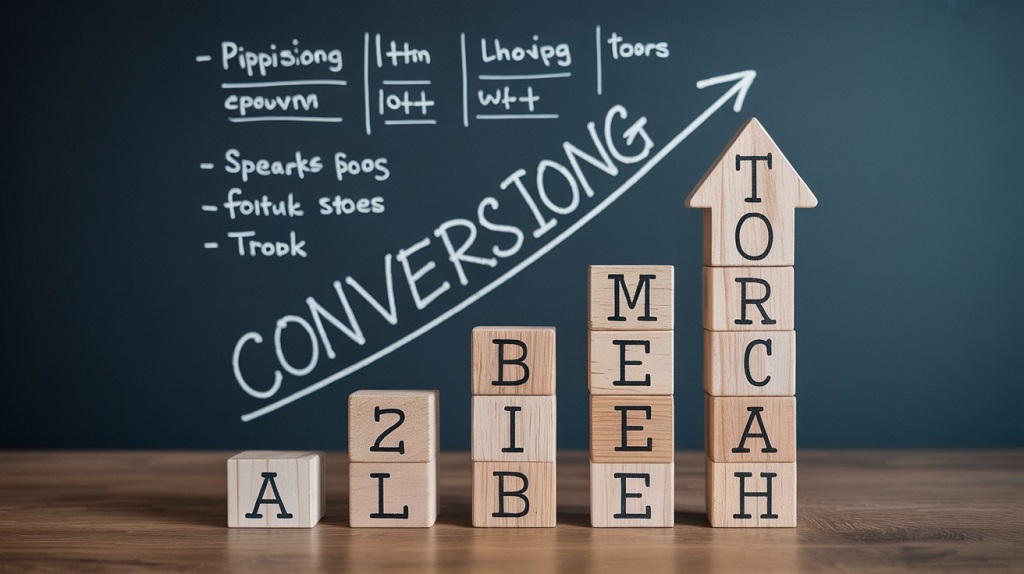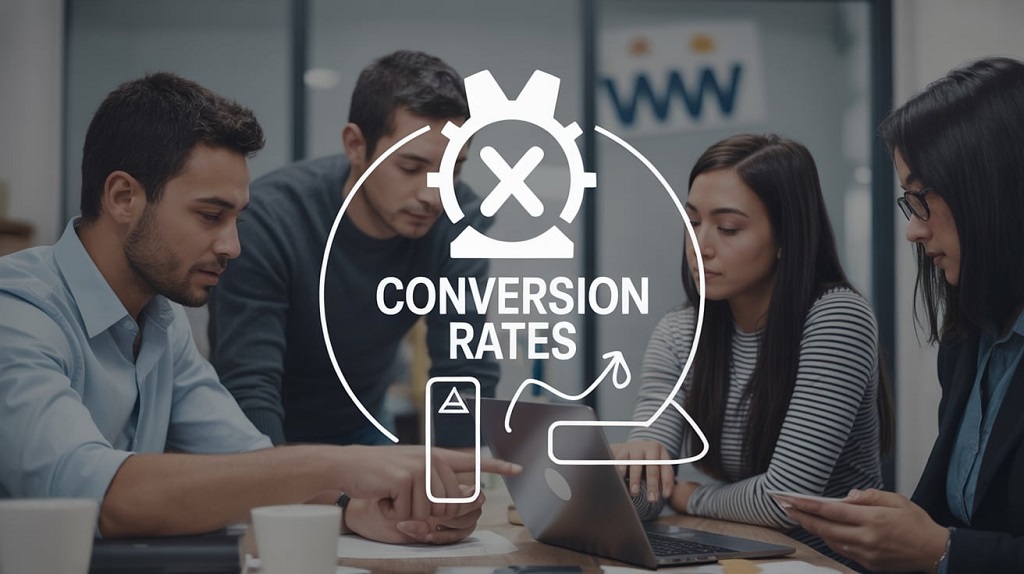Imagine pouring buckets of water into a leaky bucket sure, you’re adding more, but most of it spills out before it serves any purpose. That’s exactly what happens when startups obsess over driving more website traffic without first sealing those conversion leaks. In the fast-paced world of entrepreneurship, it’s tempting to chase viral growth hacks or pump ad dollars into acquiring visitors. But here’s the harsh truth: without solid conversion rates, all that traffic is just vanity metrics. This article dives deep into why prioritizing conversion rate optimization (CRO) is the smarter path for sustainable startup growth, chasing more traffic .backed by practical insights and strategies to help you shift your focus.
Understanding Conversions in the Startup Ecosystem
What Are Conversions and Why Do They Matter?
At its core, a conversion is any desired action a visitor takes on your site, from signing up for a newsletter to making a purchase. For startups, conversions are the lifeblood that turns casual browsers into loyal customers. Yet, many founders overlook this, fixating instead on metrics like page views or social media followers.
Conversion rate optimization involves tweaking elements like landing pages, user experience, and calls-to-action to boost the percentage of visitors who complete these goals. According to industry benchmarks, the average e-commerce conversion rate hovers around 2-3%, but top performers hit 5% or higher. For a startup, even a 1% improvement can mean exponential revenue growth without spending extra on ads.
The Pitfalls of Traffic-First Strategies
Chasing more traffic through SEO tactics, paid search, or content marketing sounds logical—more eyes equal more opportunities, right? Wrong. If your site isn’t optimized for the customer journey, high traffic volumes often lead to high bounce rates and wasted resources. Think about it: a startup spending $10,000 on Google Ads to attract 10,000 visitors at a 1% conversion rate nets just 100 customers. But fix conversions to 3%, and those same visitors yield 300 customers—no additional ad spend required.
This traffic obsession stems from the allure of quick wins. Founders see competitors boasting about massive user acquisition numbers, but those stories rarely reveal the churn rates or low retention that follow. In reality, unchecked traffic growth can strain servers, inflate customer acquisition costs (CAC), and dilute your brand if visitors leave frustrated.
The Benefits of Prioritizing Conversion Optimization
Cost-Effective Growth and Scalability
One of the biggest advantages of fixing conversions before scaling traffic is cost efficiency. Startups operate on tight budgets, and CRO allows you to maximize returns from existing visitors. Tools like Google Analytics or Hotjar can reveal where users drop off in the sales funnel, enabling targeted fixes that don’t break the bank.
For instance, A/B testing different button colors or headline copy can yield surprising uplifts. A simple change, like clarifying your value proposition on the homepage, might increase sign-ups by 20%. This scalability means that when you do ramp up traffic—through organic search optimization or influencer partnerships—you’re building on a solid foundation, not a house of cards.
Enhanced User Experience and Customer Loyalty
Conversion optimization isn’t just about numbers; it’s about understanding your audience. By analyzing user behavior, you can refine the overall website experience, making it more intuitive and engaging. This leads to higher customer satisfaction, repeat business, and positive word-of-mouth—key drivers for long-term startup success.
Consider how seamless navigation reduces friction in the buyer journey. If a potential customer struggles with a clunky checkout process, they’re gone forever. Optimizing for mobile responsiveness, fast load times, and personalized content addresses these pain points, fostering trust and loyalty. In a competitive landscape, where 88% of consumers won’t return after a bad experience, this edge is invaluable.
Data-Driven Insights for Better Decision Making
CRO forces startups to dive into data, uncovering insights that inform broader strategies. Heatmaps show where users click (or don’t), session recordings highlight confusion points, and surveys capture direct feedback. These tools transform guesswork into evidence-based decisions.
Moreover, optimizing conversions aligns with growth hacking principles but in a more sustainable way. Instead of hacking for viral loops, you’re ensuring that acquired users stick around. This data also helps refine your marketing funnel, targeting high-intent keywords in your SEO efforts to attract quality traffic over quantity.
Common Conversion Killers and How to Fix Them
Poor Landing Page Design
Landing pages are often the first touchpoint, yet many startups treat them as afterthoughts. Cluttered layouts, vague messaging, or slow-loading images can kill conversions instantly. To fix this, focus on clarity: Use compelling headlines that address pain points, incorporate social proof like testimonials, and include a single, prominent call-to-action (CTA).
Implement A/B testing to compare variations. For example, test a short-form vs. long-form page to see what resonates with your audience. Tools like Optimizely or Unbounce make this accessible even for non-technical founders.
Inadequate Mobile Optimization
With over 50% of web traffic coming from mobile devices, ignoring this is a rookie mistake. Responsive design ensures your site adapts seamlessly, but go further by optimizing for touch interactions and faster mobile speeds.
Conduct usability tests on various devices to identify issues like tiny buttons or zoomed-out text. Google’s Mobile-Friendly Test is a free starting point. Fixing these can boost mobile conversions by up to 30%, turning smartphone users into paying customers.
Trust and Security Concerns
Startups often lack the brand recognition of established players, so building trust is crucial. Display security badges, clear privacy policies, and money-back guarantees to alleviate fears. For e-commerce, integrate trusted payment gateways like Stripe to streamline transactions.
Additionally, leverage user-generated content such as reviews or case studies. A study by BrightLocal found that 87% of consumers read online reviews for local businesses, highlighting how authenticity drives conversions.
Overcomplicated Customer Journeys
A convoluted path from awareness to purchase frustrates users. Map out your funnel and eliminate unnecessary steps—simplify forms, offer guest checkouts, and use progress indicators for multi-step processes.
Personalization can shorten this journey. Use tools like HubSpot to segment visitors and deliver tailored content, increasing relevance and conversion likelihood.
Real-World Examples of Conversion-First Success
Take Dropbox, which famously grew through referrals but first nailed its core conversion: the sign-up process. By simplifying onboarding and offering incentives, they achieved viral growth on a optimized base.
Another case is Airbnb. Early on, they focused on high-quality photos and user-friendly listings to convert browsers into bookers, before scaling global traffic. This CRO foundation helped them weather competition and expand sustainably.
Even smaller startups like Buffer prioritized blog conversions, optimizing CTAs to turn readers into trial users. Their transparent approach to sharing metrics shows how CRO fuels consistent growth without massive ad budgets.
Measuring and Iterating on Conversion Improvements
Key Metrics to Track
Beyond basic conversion rates, monitor bounce rates, time on page, and exit rates. Use cohort analysis to see how changes affect user retention over time. Set benchmarks based on your industry—SaaS might aim for 5-10% trial sign-ups, while e-commerce targets cart completion.
Tools and Best Practices for Ongoing Optimization
Free tools like Google Optimize for A/B tests or Crazy Egg for heatmaps are startup-friendly. Adopt an iterative mindset: Test one variable at a time, analyze results, and scale winners.
Remember, CRO is ongoing. As your startup evolves—adding features or entering new markets—revisit optimizations to stay aligned with user needs.
Read More Also: effective email marketing strategy
Conclusion: Make Conversions Your Startup’s Secret Weapon
In the race for startup success, it’s easy to get caught up in the glamour of massive traffic numbers. But as we’ve explored, fixing conversions first lays the groundwork for efficient, scalable growth. By enhancing user experience, reducing costs, and leveraging data, you’ll turn more visitors into advocates without endless chasing.
Ready to transform your startup? Start by auditing your current conversion funnel today. Sign up for a free CRO tool trial or consult with a growth expert—your future revenue will thank you. What’s one change you’ll make this week? Share in the comments below to join the conversation!
Read More Also: save money in a Google AdWords campaign
Frequently Asked Questions
What is the difference between traffic and conversions?
Traffic refers to the number of visitors to your site, while conversions are the specific actions those visitors take, like purchases or sign-ups. High traffic without conversions means lost opportunities.
How can startups measure conversion rates effectively?
Use analytics tools to track goals, such as form submissions or sales. Divide conversions by total visitors and multiply by 100 for the percentage. Regularly review to spot trends.
Why do conversions drop even with more traffic?
Common reasons include poor site design, irrelevant traffic sources, or mismatched user expectations. Optimizing for quality over quantity fixes this.
What are some quick wins for improving conversions?
Start with A/B testing CTAs, speeding up page loads, and adding trust signals like reviews. These low-effort changes can yield fast results.
Is CRO only for e-commerce startups?
No, it’s relevant for all—SaaS for sign-ups, content sites for subscriptions, and more. Tailor strategies to your business model for maximum impact.








+ There are no comments
Add yours